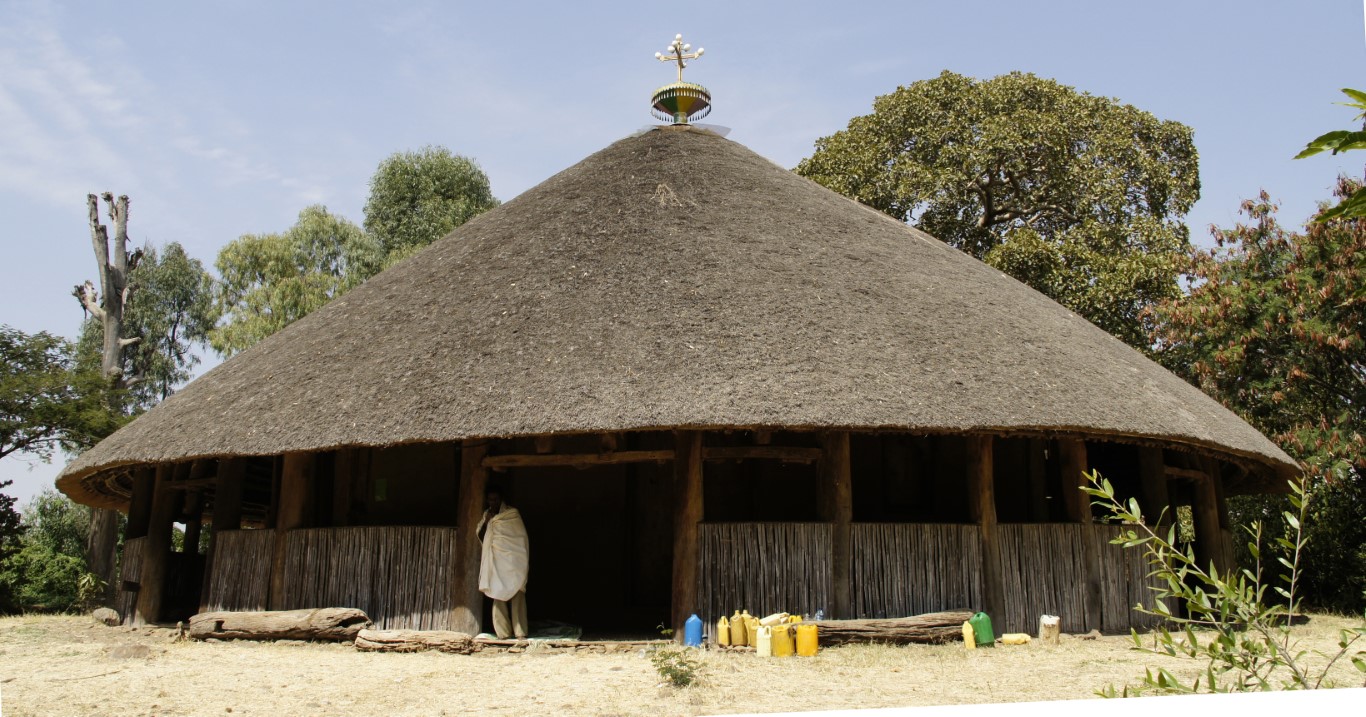
type: RECENTLY BUILT CHURCH
CIRCULAR FLOOR PLAN
17th CENTURY AND LATER
this church is one of the most intact church buildings with its imposing thatched roofing. it reminds us of the biblical idea that jesus considers his followers as a flock of sheep and the church as the sheepfold, the place to protect them. inside is the cubical stone built makdas, the holy of holies. (see the iconography page)

the church is attractively situated, surrounded by a variety of trees and bushes.
the outer ring and the conical roof are made of wood and reed, where birds are always welcome.

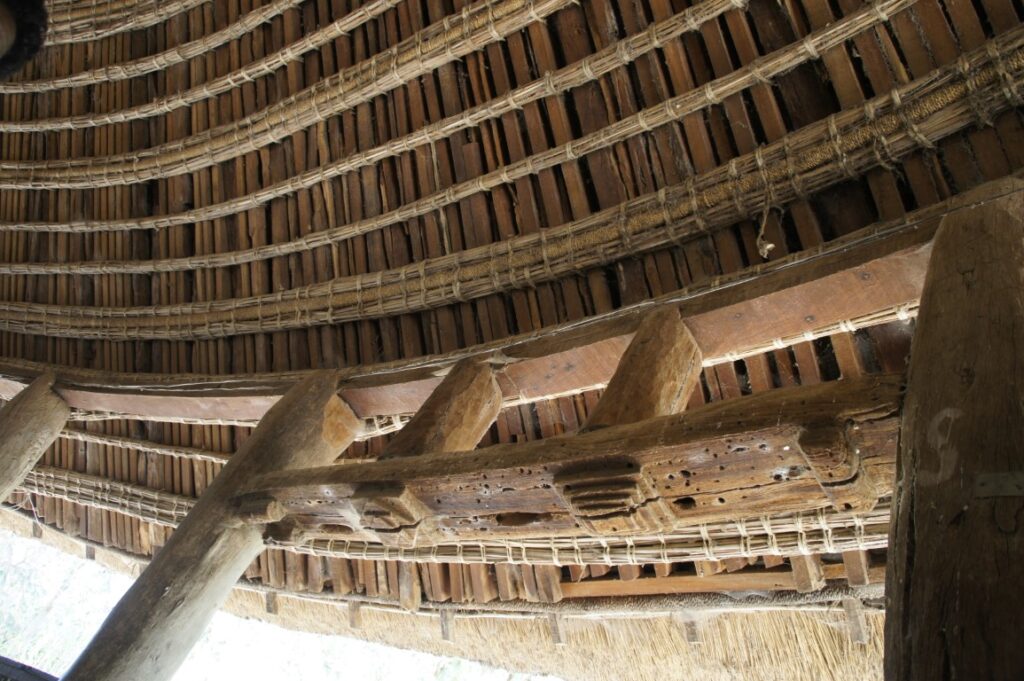
the handwork, technical skill and details deserve our admiration. beauty is created simply by assembling wood and reed.
look for the book in the stand and realize that this curious construction is an otdoor pulpit. traditional churches are not fit to receive a numerous audience. services are often held in the open air, hence this pulpit. even individuals often pray outside the church, men at the the north wall women at the south.
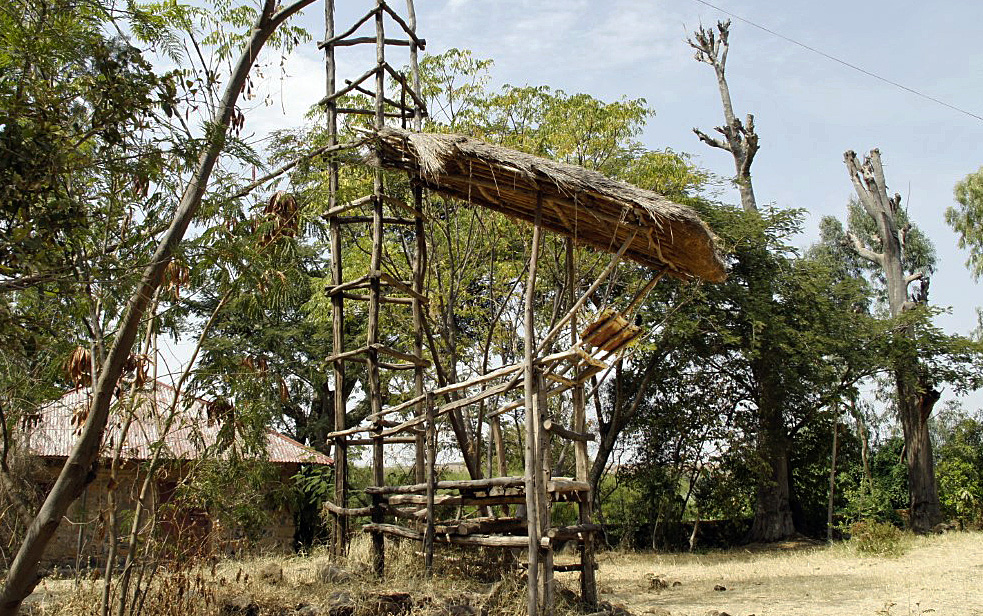
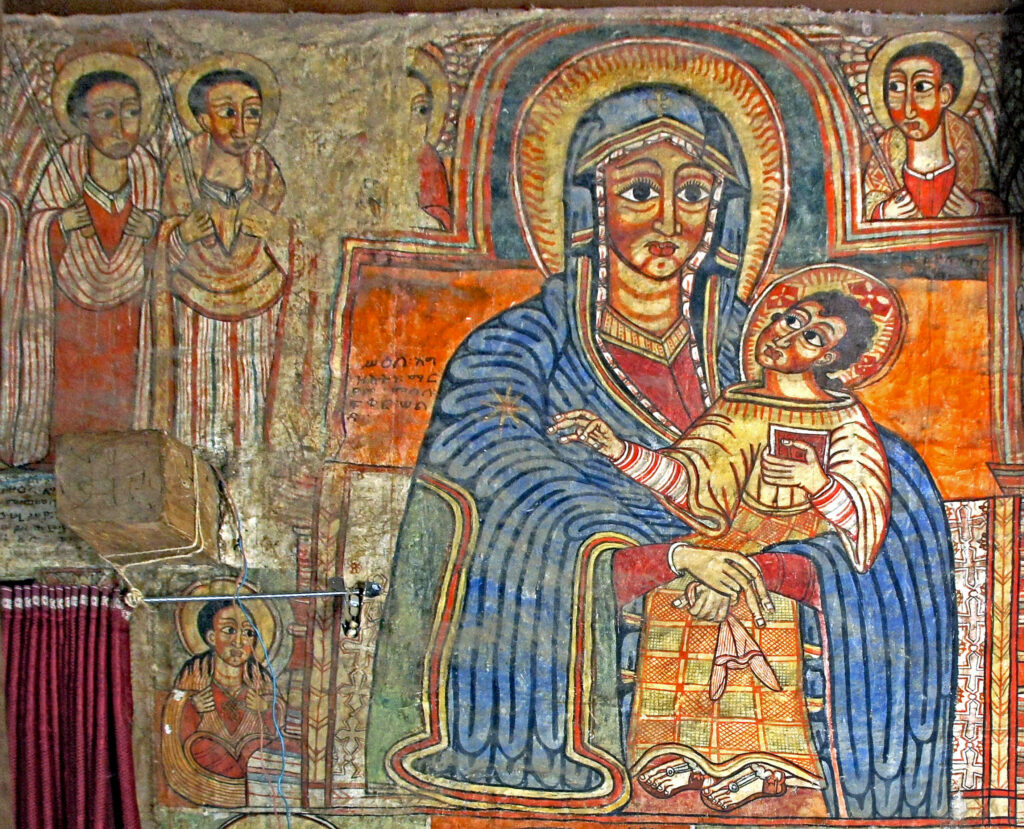
as the church is dedicated to saint mary, she is the first lady we must pay attention to. she is traditionally dressed in blue. blue pigments used to be expensive (lapis lazuli) and only that was good enough for the holy mother. the red stains in the faces are shadows for modelling, not painted after reality but after a fixed set of rules. the folds in their apparel serve the same purpose, apart from being folds they make the figures look three dimensional.
painters in ethiopia often care less for a correct anatomy, especially in limbs. jesus for instance has two left feet sticking out in his sandals. eyes are often painted larger than real to indicate who is relating to whom. six pairs of eyes are looking at mary, but she is looking into the world to look after us. a tiny handkerchief in the left hand means that she is member of an important or elite family.
the story of herod and salome is well known both in the christian western world and in christian ethiopia.
herod was married to his brother’s widow herodias. john the baptist cursed him for that by calling him a sinner. herod imprisoned john. on herod’s birthday salome, daughter of herodias, danced so seductively before the king, that he promised her any gift she would desire. her mother whispered in her ear: “ask him for the head of john” and so did her obedient daughter. a promise is a promise so her stepfather ordered unwillingly to his beheader to do as salome had wished.
two episodes of the story are depicted within the same pictorial frame: the beheading of saint john and salome receiving his head. as usual the good guys are two-eyed (frontal) the bad guys one-eyed (in profile) and ugly. after the beheading john’s head rises and cries out loud: “and yet you are a sinner in the eyes of the lord!”. salome doesn’t seem to be overwhelmed with joy while carrying johns head, now with his eyes closed. mark 6:17-29
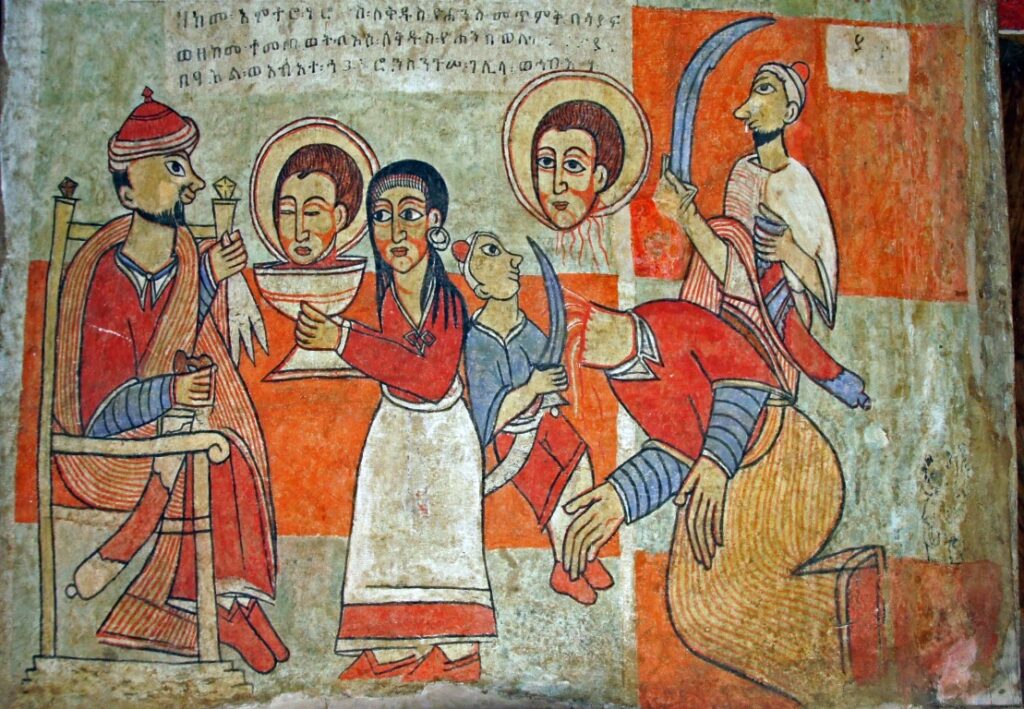
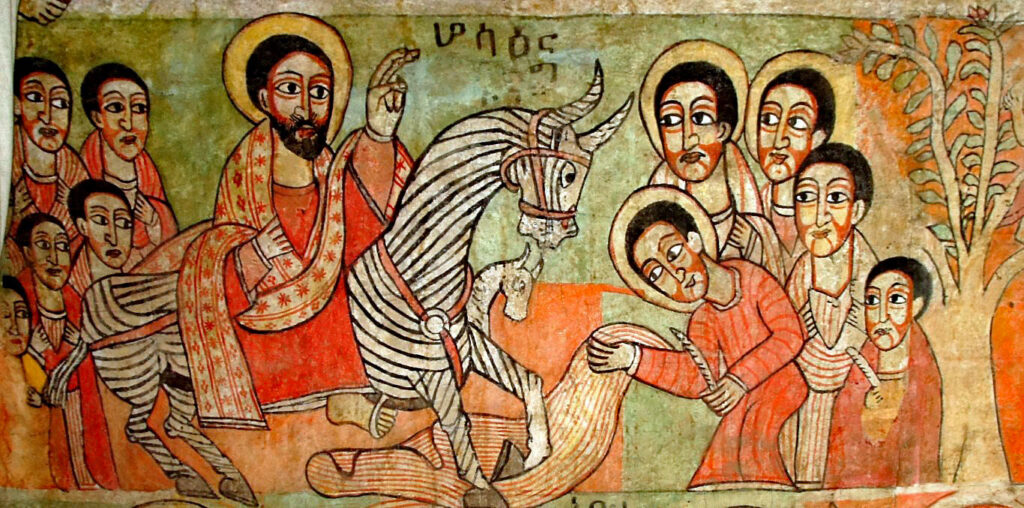
according to the 4 gospels jesus arrived in jerusalem on a donkey that had a foal. the animal looks a bit like a zebra, due to the habit of painters to use lines for modelling.
jesus and his apostles came to jerusalem for the passover, a jewish holiday. on entering the city the crowd welcomed him by waving palm branches and laying cloaks on the ground to honor him. it is the beginning of the passion of jesus, leading to his crucifixion and resurrection. the event is described in John 12:12–19.
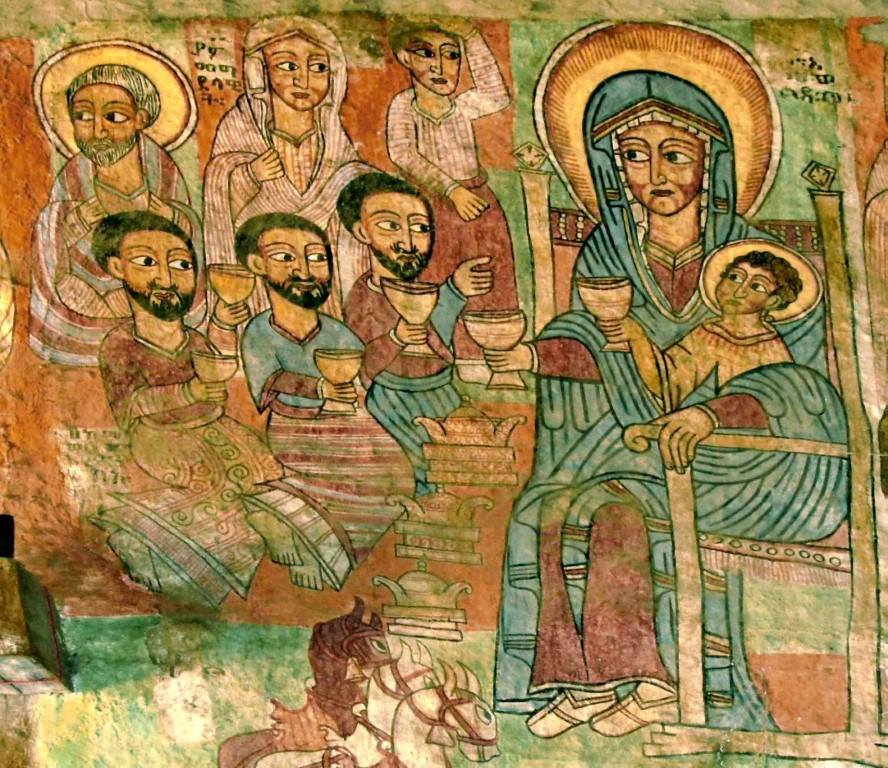
epiphany, three kings day, twelfth night, three titles for the same event. 12 days after jesus was born three kings came to honour him.
the painting is a striking example of anatomical negligence by ethiopian painters. mary and jesus, raise a cup with their right arms ending in a left hand. the three kings raise 4 cups in 4 right hands. to whom do these hands belong? if you can’t figour it out, re-read the iconography page where this picture was described. then you will also understand why saint joseph (top left) does not look at his son on mary’s lap and yet he does look at his son. Matthew 2:9-11
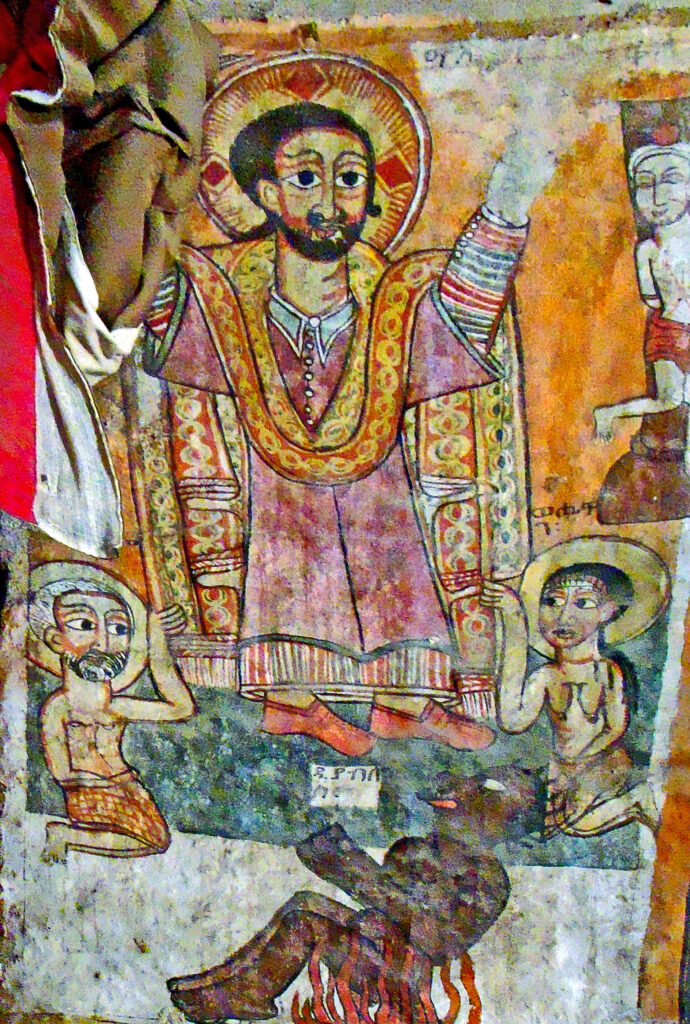
‘descent into limbo’ or ‘harrowing of hell’ are the usual terms for this event. limbo was supposingly the underworld location that every human being descended into after dying. by his crucifixion jesus christ would wash away with his blood the minor sins of his followers and take them with him into paradise. so here we see him entering the doors of hell, trampling on the devil under his feet. the haloed adam and eve cling to his robe. they represent the first members of mankind saved by their redeemer. top-right there is a glimpse of the good thieve on he cross, to whom jesus had promised: “to-day thou shalt be with me in paradise”.
